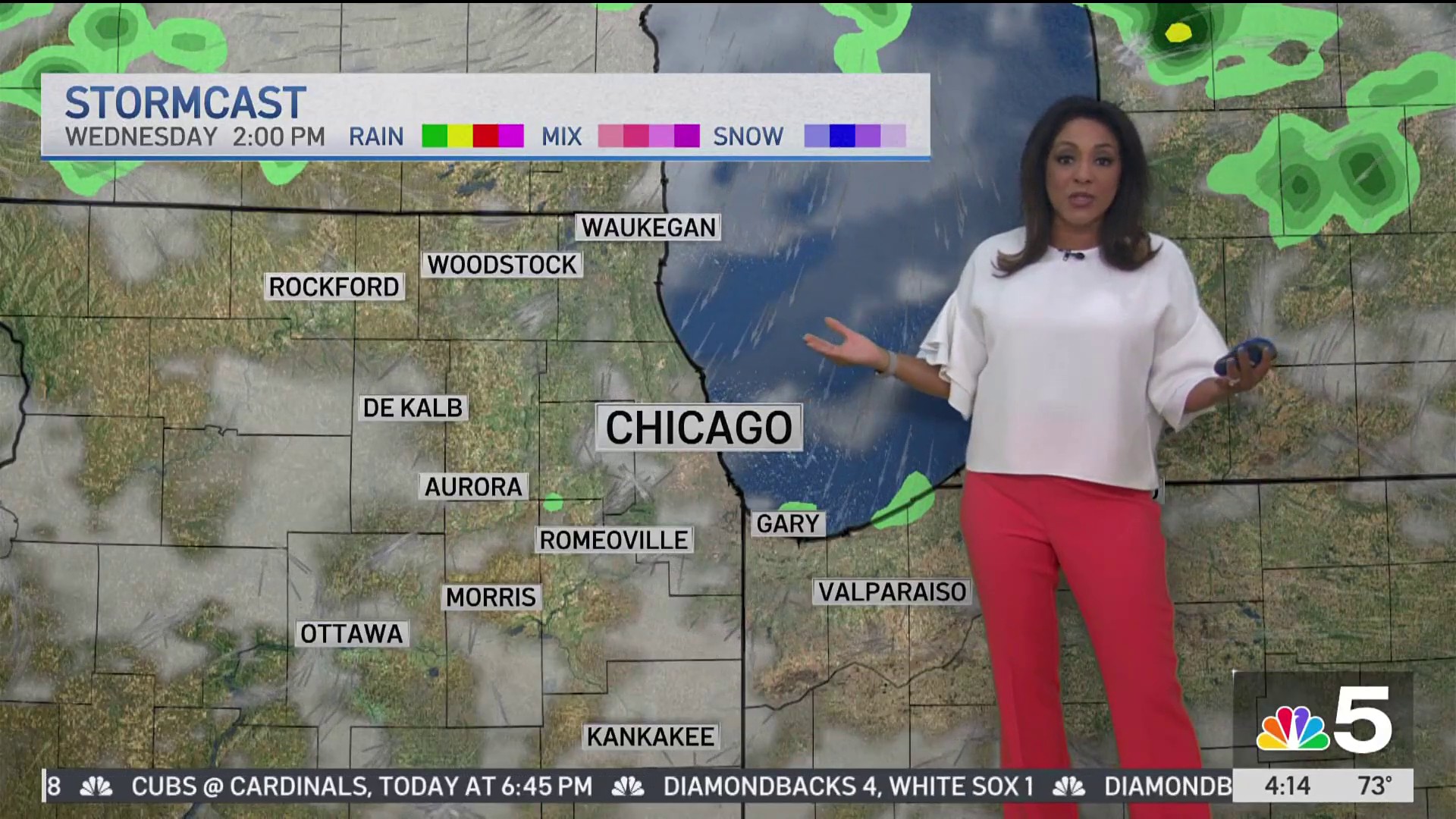Hot weather, high humidity and muggy conditions will remain in the Chicago area for the next few days, the NBC 5 Storm Team says, though the heat won't be "as extreme" as what the city and the suburbs experienced the last three days.
The next few days will also include daily chances for strong to severe storms, NBC 5 Storm Team Meteorologist Alicia Roman said.
Stream NBC 5 for free, 24/7, wherever you are.
"The rest of the week, we're still talking about hot and humid conditions," Roman said. "But it won't be as hot as it's been."
Still, Roman said, a few areas to the south will have "feels-like" temperature in the low 100s Tuesday. In Kankakee County, and in Newton and Jasper Counties in Indiana, a heat advisory was in effect, according to the National Weather Service.
Elsewhere, temperatures will be in the low-to-mid 80s to low 90s, with heat indices in the mid-90s to 100. That's compared to recent high temperatures in the upper 90s, and heat indices of 105, Roman said.
Tuesday's weather will also include the chance for thundershowers, with gusty winds and heavy downpours possible, Roman said.
About 2 p.m., rain was expected to move into Waukegan, and down through DeKalb and Ottawa. By around 5 p.m., thundershowers could move into Chicago, while remaining across the far northern counties.
According to Roman, showers and storm chances could last through 11 p.m.
Not all areas will see the rain, and the parts that do will still see dry time and partly sunny skies. However, where showers and storms do form, they could come with damaging winds up to 60 miles per hour, frequent lightning and localized flooding, the NWS warned.
Feeling out of the loop? We'll catch you up on the news you need to know with the Chicago Catch-Up newsletter.
According to the Storm Prediction Center, the Chicago area Tuesday was at a marginal risk of severe weather, which ranks as level one of five.
The rain, heat and humidity could lead to pavement buckling on roadways, the Illinois Department of Transportation warned. Some buckling incidents were already reported in the Midwest, including in Franklin, Wisconsin, where pavement buckling led to the closure of Highway 100 on Monday afternoon.
"Pavement failures or blowouts occur when prolonged high temperatures cause the road to expand and buckle up or blow out, resulting in uneven driving surfaces," IDOT said in a release. "Precipitation and humidity increase the potential for buckling."
A similar weather pattern will remain in effect for the next several days, Roman said, with heat, humidity, and daily chances for isolated showers and storms, and a marginal risk of severe weather.



